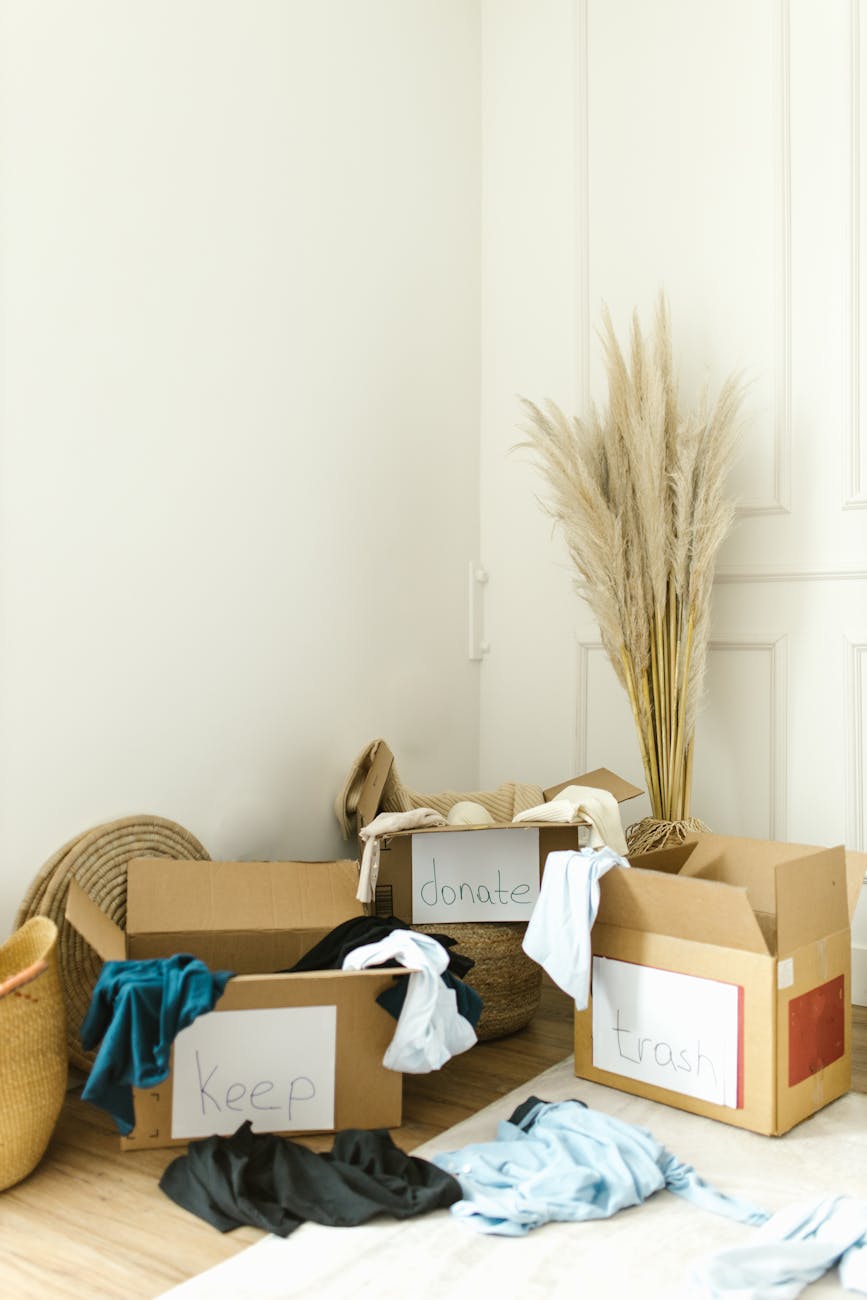
Introduction
Minimalist decluttering and cleaning is not about perfection; it is a practical system that reduces possessions and creates routines so cleaning takes less time and stress. This article outlines a focused checklist and simple systems to simplify your home, cut daily chores, and keep clutter from coming back. You will learn how to set priorities, declutter room by room using clear decision rules, build fast cleaning routines, and create storage and maintenance systems that sustain minimalism. Each section connects to the next so you move from intention to lasting habits. Follow the checklist, adapt times to your life, and you will gain not just a tidier space but measurable time savings each week.
Set goals and define your why
Begin by clarifying why you want a simpler home. Are you pursuing less stress, fewer belongings, better focus, or more time? Write one clear outcome and a realistic timeline. Use the 80/20 rule: identify the 20 percent of items and routines that cause 80 percent of the clutter and cleaning work. Set a small daily habit (for example, 15 minutes every evening) and a weekly target (an hour on Saturday). Decide on simple decision rules to speed choices: if you haven’t used an item in 12 months, consider letting it go; adopt a one-in-one-out policy for new purchases. These commitments shape the rest of the process and keep choices consistent when you start decluttering.
Declutter room by room using clear criteria
Work in a logical order so each cleared space helps the next: start with shared areas (entry, living room), then kitchen, bedrooms, bathrooms, and finish with storage spaces. Use timeboxing—set a 30- to 90-minute window per session—and the basket method: sort into Keep, Donate/Sell, Recycle, Repair, and Trash. Apply objective questions to each item:
- Have I used this in the past year?
- Does it support my current life goals?
- Would replacing it be cheaper than keeping it?
Tackle surfaces first (counters, tables) to create immediate visual wins. For clothes, try a quick fit-and-feel test: if it doesn’t fit and you won’t alter it, let it go. For sentimental items, limit to one memory box per person. Decluttering reduces the number of items that collect dust and require cleaning, which dovetails into faster routines.
Create fast cleaning routines and choose the right tools
Design three complementary routines: a daily 10–15 minute tidy, a weekly 30–60 minute cleaning session, and a monthly deep clean. Keep supplies minimal and multi-purpose: an all-purpose spray, microfiber cloths, broom/vacuum, and a concentrated floor cleaner. Follow a top-to-bottom, left-to-right order so dirt isn’t re-deposited. Sample daily routine: make beds, clear surfaces, wipe kitchen counters, load dishwasher. Weekly: vacuum/mop, wipe baseboards and appliances, clean bathrooms. Monthly deep clean: oven, windows, declutter storage, launder mattress covers. Use a timer to keep sessions focused and turn routines into habits by attaching them to existing cues, such as after breakfast or before bedtime.
Design storage and maintenance systems to prevent recluttering
Minimalism relies on systems that make the next clean easy. Implement these simple principles:
- Zone items by use and keep frequently used items accessible.
- Use clear or labeled containers so contents are visible and decisions faster.
- Adopt landing zones: a dedicated spot for keys/mail/bags at the entry.
- Limit horizontal surfaces—fewer surfaces means fewer flat places for clutter.
- Schedule a short weekly review to rehome stray items and process mail.
Maintenance habits cut the need for large purge sessions. For example, the one-touch rule for mail and receipts and a nightly five-minute reset of communal spaces are small efforts with outsized results.
Weekly and monthly checklist with time estimates
Below is a practical checklist you can print or keep digitally. Adjust times to match your home and household size. The table shows recommended frequency, estimated time, and priority so you can batch tasks and save time.
| Task | Frequency | Estimated time | Priority |
|---|---|---|---|
| Surface declutter and wipe (counters, table) | Daily | 10–15 minutes | High |
| Load dishwasher/put away dishes | Daily | 10 minutes | High |
| Quick tidy: toys, shoes, mail | Daily | 5–10 minutes | High |
| Vacuum/sweep and mop | Weekly | 30–45 minutes | High |
| Bathroom deep clean (toilet, shower, sink) | Weekly | 20–30 minutes | High |
| Laundry and linen rotation | Weekly | 60–90 minutes (spread) | High |
| Declutter one small zone (drawer, shelf) | Weekly | 15–30 minutes | Medium |
| Deep clean appliances, windows, vents | Monthly | 60–120 minutes | Medium |
| Seasonal purge (clothes, gear) | Quarterly | 2–4 hours | Medium |
Batch similar tasks to reduce setup time. For example, do all surface wiping at once, or pair laundry folding with a podcast. Track your time for two weeks to see savings and adjust the schedule accordingly.
Conclusion
Minimalist decluttering and cleaning is a practical strategy for simplifying your home and reclaiming time. Start with a clear why, apply objective decluttering rules room by room, and adopt short, consistent cleaning routines supported by smart storage and maintenance systems. The checklist and table above give a realistic framework: daily micro-tasks prevent build-up, weekly sessions handle routine cleaning, and monthly or seasonal work addresses deeper issues. Small, repeatable actions matter more than occasional deep cleans. Commit to timeboxed sessions, use visible storage and decision rules, and you will steadily reduce cleaning time and cognitive load. With habit and a simple checklist, a calmer, easier-to-clean home becomes the new normal.
Image by: RDNE Stock project
https://www.pexels.com/@rdne




